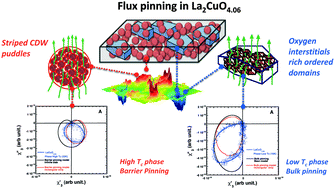The flux dynamics behavior of the two competing high temperature superconducting phases in underdoped LaCuO4.06
Abstract
In complex transition metal oxides (TMO) an arrested electronic phase separation (PS) appears by tuning the system near a Lifshitz transition in multiband Hubbard models. The PS in La2CuO4+y near insulator to metal transition (IMT) is made of short range Charge Density Wave (CDW) order inhomogeneity coexisting with quenched lattice disorder. While at high doping y = 0.1 percolation gives a single superconducting phase, near the IMT at y = 0.06 two coexisting superconducting phases appear: the first one with a critical temperature Tc1 = 16 K and the second one with Tc2 = 29 K. It is known that the two superconducting phases are characterized by two different space geometry because of two different spatial distributions of both CDW order and dopants self-organization. Here we show that these two phases show different flux dynamic regimes using alternating current (AC) multi-harmonic susceptibility experiments. This is a unique technique capable to investigate multi-phase superconductors and characterize their transport properties in a percolative scenario. Results point out that the low critical temperature phase is well described by a bulk-like flux pinning with a 2D geometry while the phase with higher critical temperature shows a ‘barrier pinning’ mechanism providing direct evidence of two different superconducting vortex dynamics in different complex geometrical spaces.


 Please wait while we load your content...
Please wait while we load your content...